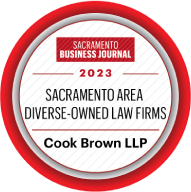This article was coauthored with Bianca M. Rodriquez, J.D. Candidate, Class of 2018, U.C. Davis School of Law
Meal and rest break law class action suits by employees continue to plague California employers, despite the best efforts or well-meaning intentions of most. A California appellate court’s decision in Rodriguez v. E.M.E., Inc. won’t make things any easier.
At question was whether an employer must require employees to take two 10-minute rest breaks, one falling before and one after the state-required meal break, or allow employees the choice of combining them into one 20-minute break to fall on either side of the required meal break.
The court held that 10-minute rest breaks do matter and generally fall on either side of the 30-minute meal break. Further, they should occur in the middle of each work period insofar as practicable.
In Rodriguez, a former employee claimed that E.M.E violated California IWC Wage Order 1-2001 by allowing employees with 8-hour shifts to combine their two 10-minute rest breaks into one 20-minute break, to fall on either side of the 30-minute meal break. E.M.E contended that its practice of allowing a combined rest break before or after the meal break was lawful because it:
- Incorporated the requisite amount of time;
- Was preferred by the employees; and,
- Increased productivity.
Wage Order 1-2001 states that, “Every employer shall authorize and permit all employees to take rest periods, which insofar as practicable shall be in the middle of each work period. The authorized rest period time shall be based on the total hours worked daily at the rate of ten (10) minutes net rest per four (4) hours or major fraction thereof.”
In its interpretation of the Order, the appellate court relied on the California Supreme Court’s decision in Brinker Restaurant Corp. v. Superior Court (2012). In Brinker, the California Supreme Court stated that “employers are subject to a duty to make a good faith effort to authorize and permit rest breaks in the middle of each work period, but may deviate from that preferred course where practical considerations render it infeasible.”
Rest Break Law Compliance Departure
Relying on Brinker, the appellate court concluded that departing from the “preferred schedule” is only permissible when the departure:
- Does not affect employee welfare; and
- Is tailored to alleviate a material burden that would be imposed on the employer by implementing the preferred schedule.
A departure that is merely advantageous to the employer cannot satisfy the requirement of the Wage Order.
With this interpretation, the appellate court held that summary judgment – which was requested by E.M.E. – could not properly be granted with respect to the employer. The evidence in favor of the combined breaks was disputed by testimony presented by the employee that disassembly and shut-down took only seconds and not 20-minutes. Due to this disputed evidence, the court reversed and remanded, concluding that E.M.E’s practice was not detrimental to its employees and it allowed E.M.E to avoid material economic losses.
In its interpretation of Wage Order 1-2001, the appellate court is stating that employers must be able to prove that their departure from the preferred schedule, in this case, a 10-minute rest break on either side of the 30-minute meal break, does not negatively affect their employees and is required to alleviate a burden, evidence of mere advantages to the employer is not sufficient to fulfill the requirements of the Wage Order.

